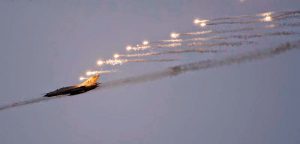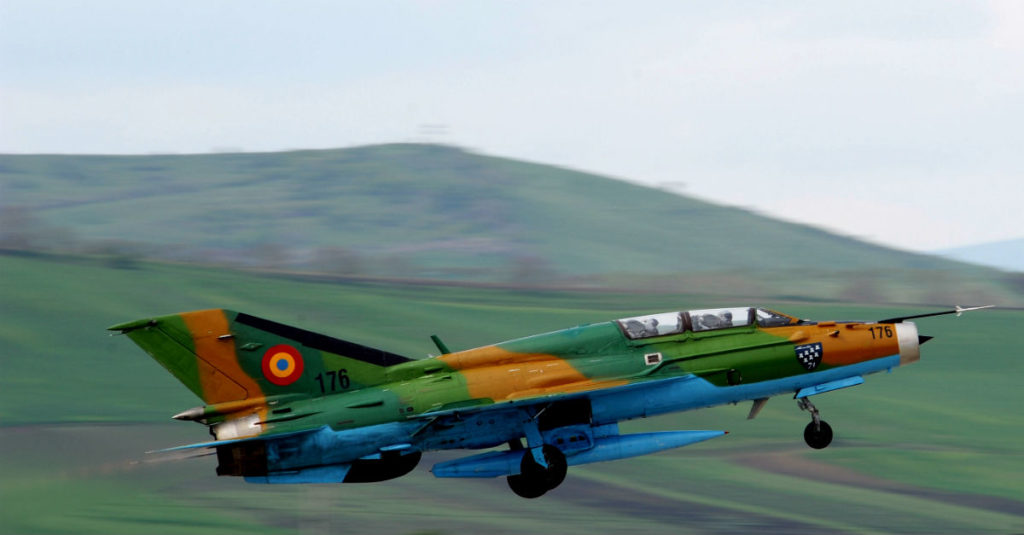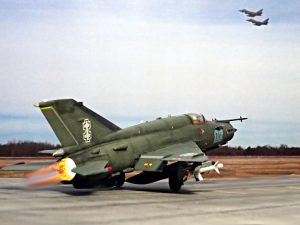The MiG-21 Single Engine Jet Fighter
The MiG-21, known by its NATO moniker as the Fishbed, is a single engine jet fighter produced by the Mikoyan-Gurevich Design Bureau as an improvement on prior generations of the MiG-17 and MiG-19. Both had been used to great effect in both the Korean War and the Vietnam War but, surprisingly, the MiG-21 has been flying since 1953.
Cheap But Reliable:
Since its first flight, it has been exclusively sold to foreign air forces because it’s a cheap, rugged, and reliable fighter jet aircraft made to work with a ground coordinator. It lacked all the technological evolutions such as in-house long-range radar and long-range guided missile capability. Later versions incorporated an advanced avionics flight deck that allowed this fighter jet to compete with even third generation fighters. In total, over 5,000 MiG-21s have been built and they operate in over 33 countries. Outside of the F-16 Falcon, no other fighter jet has been produced to this quantity and distributed so widely.

Unique Tactics:
The MiG-21’s main battle strategy involved fast ambushes and hasty retreats. In the early days of the MiG-21, these fighter jets would optimally ambush enemy air formations and quickly speed off before a retaliatory attack. These guerrilla air ambush tactics were perfected by the North Vietnamese towards the end of the Vietnam War. Part of the reason they were necessary was a lack of advanced avionics. The MiG-21 had raw speed and excellent maneuverability. This opened it up to F-104 style offensives but precluded it from engaging in long protracted dogfights with advanced aircraft.

Firepower:
The most popular weapon that the MiG-21 used was its AA-2 Atoll. This classic Soviet-era infrared homing missile was used for extreme close range air-to-air attacks, accounting for the vast majority of all confirmed kills by the North Vietnamese.
While the MiG-21 was equipped with a single 30mm cannon, it was extremely effective with short range missiles against even advanced warfighters like the F-4C Phantom. In fact, this was one of the most frustrating aspects of the MiG-21 in its early encounters with American fighter jets. A relatively cheap, cost-efficient, compact fighter would run circles around a behemoth that the Navy spent almost a decade trying to perfect.

Distribution:
Even after the Vietnam War, MiG-21 jets have been active in other notable foreign air forces such as India, Egypt, and Syria. These jets have served with distinction in each air force and currently occupy the fleets of thirty other countries.

Despite technological improvements to the avionics deck, most modern third and fourth generation fighters cannot surpass the MiG-21 in terms of speed. While they have advanced systems for detection, evasion, and targeting, they cannot outrush or outmaneuver this aircraft. Therefore, this makes it ideal for air defense roles.
With no immediate plans to scrap these fleets this jet is on track to continue flying for the foreseeable future. In addition, if the F-16 does not surpass it with time, the MiG-21 will be the oldest flying fighter jet in the world.
Powerplant:
The MiG-21-93 is powered by a single Tumansky R25-300 turbojet. This turbojet produces 9,040 lb-ft (40.21 kN) thrust dry and up to 15,650 lb-ft (69.62 kN) with afterburner.
See MiG-21 Specifications
| Height: 13 feet 6 inches (4 m) |
| Length: 47 feet 7 inches (14.5 m) |
| Wingspan: 23 feet 6 inches (7.154 m) |
| Empty Weight: 12,880 lbs. (5,846 kg) |
| Loaded Weight: 19,425 lbs. (8,825 kg) |
| Maximum Speed: 1,351.48 mph (2,175 km/h, Mach 2.0) |
| Range: 751 miles (1,210 km) off of internal fuel |
| Service Ceiling: 58,400 feet (17,800 m) |
| Crew: 1 |

